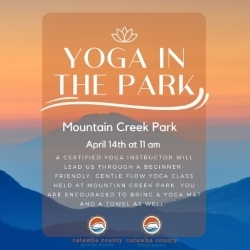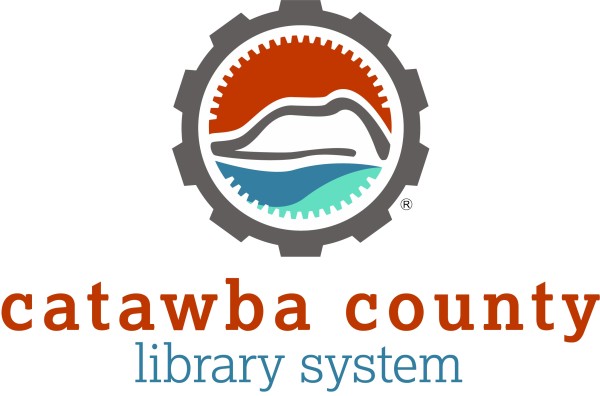The Catawba County Library System embarked on efforts to incorporate Health Programming into their overall mission and offerings to the public, and through the power of partnerships, have found inspiration, resources and an enhanced role as a facilitator for community.
As a result of participating in our Public Health Department’s Community Health Assessment process in 2016, again in 2019, and remaining engaged since then, Catawba County Library has become more embedded in the fabric of the community while Library staff have become more aware of health outcomes and circumstances in various neighborhoods around the county. For example, we learned that we have two food deserts, as defined by the USDA; that 20.5% of children in our county are living below poverty level and 55% are enrolled in free and reduced lunch; that more than 25% of adults in Catawba County reported that they did not engage in any physical activity that lasts at least 30 minutes; and that the life expectancy for residents of census tract 107 was 64.6 years, while that of residents of census tract 105.02 located five miles to the north was 82.6 years.
Seeing these specific conditions spurred us to really try and support our healthcare system, especially our public health department. In 2021, most Library staff were trained to take phone calls and set COVID vaccine appointments, which we did throughout that spring, because the call volume was so great.
Initially, we thought that providing weekly fitness classes would be our most significant effort toward improving health outcomes for our residents (Reduce the proportion of adults who do no physical activity in their free time — PA‑01). Not everyone can afford a gym membership and not every neighborhood is a safe place to go for a walk. So we started with Zumba, and then expanded to Yoga, Tai Chi, regular hikes, and a summer fitness sampler last year. Through our outreach to other community organizations, we quickly learned that there were many more opportunities to let the Library be a Community Hub for all things Health and Wellness.

Since that first Zumba class, we’ve also partnered with:
- Our Cooperative Extension and Farmer’s Market to offer the Med Instead of Meds program & other cooking programs
- Our local hospital to offer nutrition workshops, diabetes prevention classes, stress management, CPR, and dozens of other classes
- Legal Aid of NC and our Area Agency on Aging to offer one-on-one help with Medicare and Healthcare Marketplace open enrollment periods
- Our local soup kitchen – holding an annual food drive for them, donating the vegetables out of our community garden to them, and serving as a distribution point for them to make available nonperishable, ready-to-eat foods that people can pick up any time the library is open
- Two local nonprofits who provided free hats and coats this past winter
- A local dentist who guest-hosted a storytime to promote good dental hygiene to children and gave away toothbrushes and toothpaste
And too many other such partnerships to list.
Everywhere we go, we’re always asking ourselves, is there any way the Library can help this nonprofit meet their goals? My greatest hope is for people in every community to reach out to their public library to find out if there’s a way they can help – whether by providing free meeting space, by hosting a health-related program, or by forming a partnership to help meet specific community needs. I sometimes get ideas for Library programs from the objectives listed on the Healthy People 2030 site. Just the other day I was reading about Nutrition and Aging and special considerations for older adults. I immediately started to think about who I could partner with to do a program about making delicious fruit-infused waters and herbal teas.
It has been very helpful to be able to use the Healthy People 2030 website to learn more. The Leading Health Indicators help us see how Library programs are actually contributing to alleviating health inequities, when our motivation was originally focused on say, helping people with job applications or interview skills (Increase employment in working-age people — SDOH‑02). And of course childhood and early childhood literacy has always been a big part of what libraries do – as it turns out, this is another way Libraries can contribute to better health outcomes for these children as they grow into adults (Increase the proportion of 4th-graders with reading skills at or above the proficient level — AH‑05 & Increase the proportion of children whose family read to them at least 4 days per week — EMC‑02).
Our first Zumba class had 8 participants and we thought that was great. As we continued to get the word out, attendance grew and now, five years and one pandemic later, we have as many as 40 people showing up to our Monday night class – we’re about to launch a second class or find a bigger room! One of staff became a certified Yoga instructor so that she could offer classes at her location. Our cooking and nutrition workshops also built up to robust attendance. Since we survey participants regularly, they let us know how things are going for them. One lady is no longer taking her blood pressure medicine. Another lady, who told us she never exercised before, is not only doing Zumba each week, but is now going for walks around downtown and taking her neighbor with her. These are the ripple effects, some of which are made known to us.
The most important part of creating so many partnerships is clear communication – both about our goals and what we hope to accomplish with any given effort, and about our capacity. We don’t have any ‘extra’ staff – we can only accomplish what our staffing and budget capacity allows, so it’s important to be realistic about that with our partners. Often we’ll have a Memorandum of Understanding between the Library and the other organization to spell out what each of us will do, how much we will spend, etc.
Another result of these successful efforts has been that Library leadership decided to add Health outcomes to employee performance reviews and to the Library’s overall outcome review by the County Manager. What this means is that each librarian has a target of providing a certain number of health and wellness programs with at least 85% of attendees reporting that they learned something new, intend to implement what they learned, and/or feel more confident about implementing what they learned. This is excellent because it means that our Library will continue providing these programs, regardless of any staff turnover we might experience. Health and Wellness is now a part of who we are.
For more information, go to https://www.catawbacountync.gov/county-services/library/ and https://schs.dph.ncdhhs.gov/units/ldas/cha2019/Catawba%20County%202019%20CHA.PDF.



